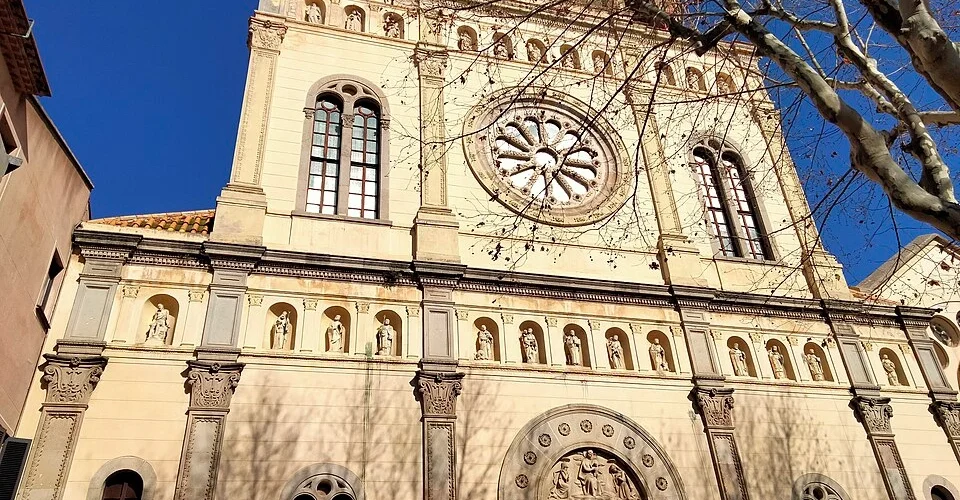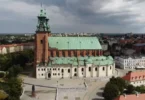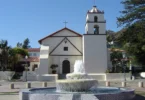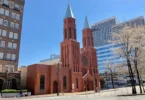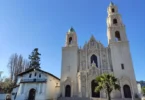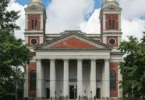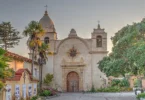Introduction

The Basilica of Santa Maria de Mataró, located in the town of Mataró in the Maresme region, is a remarkable historical and religious landmark. The current structure dates back to 1675, but the site itself holds a much older heritage, with documented references to earlier places of worship dating as far back as the year 1008. Before the existing basilica, a Romanesque church once stood on this location, serving the spiritual needs of the community during the medieval period. Even earlier, the site was home to a temple of Roman origin, highlighting its long-standing significance as a sacred place through successive eras. Recognized for its architectural and cultural importance, the Basilica of Santa Maria de Mataró is designated as a Cultural Asset of National Interest, preserving its legacy as a vital piece of Catalonia’s religious and historical fabric.
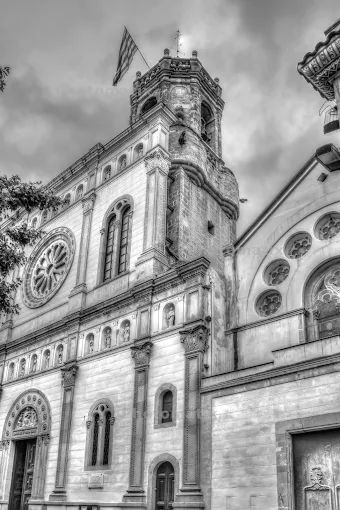
Early Origins and Romanesque Church
The church of Santa Maria de Mataró has a rich history documented as far back as 1054. It is believed that the original building was a small pre-Romanesque or Romanesque church that served the community until the late 14th century. This early structure was eventually replaced by a Gothic temple that marked a significant architectural evolution on the site.
Gothic Temple Construction
In the first quarter of the 16th century, a new Gothic temple featuring three naves was constructed on the same location, with work commencing in 1508. By 1533, the University Council had commissioned the Portuguese painter Pere Nunes to create the main altarpiece for the church. Today, only the lower section of the bell tower and the pointed arches of the side chapels remain from this Gothic temple, as it eventually proved too small to accommodate the growing population of Mataró.
Transition to the Current Basilica
In 1675, construction began on the current basilica, extending the eastern part of the old 15th-century church. The project was initially overseen by Father Josep de la Concepció, known as the “tragic architect,” who was soon replaced that same year by Ercole Turelli, a Milanese architect residing in Barcelona. The master builder Benet Juli of Barcelona was commissioned to carry out the construction. Work on the basilica experienced several interruptions and was only completed in 1754 with the addition of the Portal Xic. The façade, as seen today, was constructed later, between 1861 and 1864, by architect Gaietà Simó. In 1864, the Chapel of the Sacrament was added, built on the site of an old grave and designed by the local architect Emili Cabanyes, with interior decoration by painter Enric Monserdà.

The Dolors Complex
Attached to Santa Maria is the Dolors complex, built between 1698 and 1708. Initially a separate entity from the parish, it was richly decorated from 1722 onwards by the painter Antoni Viladomat.
Artistic Highlights: The Altarpieces
Construction of the Baroque altarpiece of the Rosary began in 1690, created by Mataró sculptor Antoni Riera, who was initially assisted by Lluís Bonifaç and later by his son, Marià Riera. This altarpiece, along with those of Saint Nicholas and fragments from Saint Desideri, are among the few works that survived the widespread destruction during the Spanish Civil War (1936–1939). The church originally commissioned a major altarpiece from Carles Moretó during the completion of the architectural ensemble, but it remained unfinished. A second altarpiece, created by Salvador Gurri between 1779 and 1795, adorned the high altar until it was destroyed in 1937. Complementary artworks were made by painter Pere Pau Montanya and his son-in-law Joan Giralt. Above the main portal stands a monumental organ, built by Gaietà Estadella in 1927 and later restored in 1974 by Gabriel Blancafort i París and Georges Lhote. The decoration of the high altar was contributed by Santiago Estrany i Castany.
Restoration and Cultural Significance
The Basilica of Santa Maria underwent significant restoration efforts in the late 19th century and again after the Spanish Civil War. In 1928, it was elevated to the status of a minor basilica, reflecting its importance within the religious and cultural heritage of the region. The surrounding area was also designated as a protected setting to preserve the church’s historical context. At the close of the 20th century, the façade and its surroundings were restored and rehabilitated to maintain their architectural integrity.
Recent Events and Relics
On January 23, 2010, the basilica hosted the beatification of Josep Samsó i Elias, marking the first beatification ceremony in Catalonia since the 12th century. The blessed is interred within the basilica, which also houses the relics of Saints Juliana and Semproniana, further enhancing its spiritual significance.
Architecture of Basilica of St. Mary, Mataró, Spain
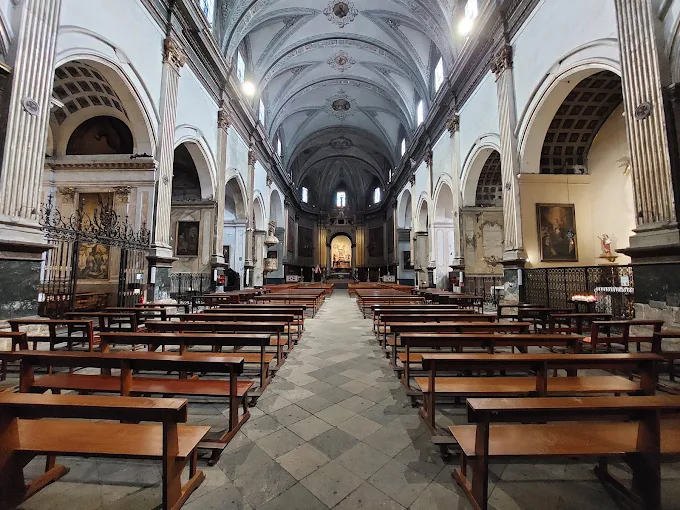
Architectural style : Gothic architecture, Baroque architecture, Neoclassical architecture
Central Nave and Architectural Layout
The Basilica of Santa Maria de Mataró, the traditional parish church of the city, is prominently situated in the Plaza de Santa Maria. Architecturally, it is a large structure that blends Baroque and Neoclassical styles. The church features a single, expansive central nave covered by lunette vaults. Along the nave, side chapels are positioned between the supporting buttresses. The wide transept intersects the nave and houses two notable chapels at its arms: the Chapel of the Roser (Rosary) on one side and the Chapel of Sant Josep on the other. These chapels are preceded by a space crowned with a dome, adding to the vertical grandeur of the interior. The presbytery, or sanctuary area, has a polygonal floor plan with gently rounded walls, contributing to the elegant flow of the space. Significantly, the pointed Gothic arches providing access to the side chapels are original features preserved from the previous Gothic church, which originally had three naves before the current single-nave design. At the rear of the nave, a narthex serves as the entrance area, above which the monumental organ is installed. The basilica’s façade, built in a historicist style during the mid-19th century, consists of two distinct levels. The lower level is centered around the main entrance and vertically divided into five sections by Corinthian pilasters, while the upper level has three sections and is dominated by a central rose window. The Baroque-style bell tower stands to the right of the church, resting on the original Gothic base, symbolizing the architectural layering through the centuries.
Chapels within the Basilica
Several chapels flank both sides of the nave, reflecting the church’s historical expansions. These additions correspond largely to the 1675 expansion led by Milanese architect Ercole Turelli. On the left side of the nave, visitors find the baptistery, followed by the Chapel of the Saints (formerly the Sacrament Chapel) dating back to the 17th century, then the Chapel of the Puríssima, and finally the Chapel of Sant Desideri. On the right side, directly adjoining the façade, lies the 19th-century Chapel of the Sacrament. Further along this side are the Chapel of Sant Joan, which contains the altarpiece of Sant Nicolau, and adjacent to the transept, near the small graveyard, is the magnificent Chapel of the Dolors. This Baroque chapel, originally separate from the parish church, is richly decorated and painted by Antoni Viladomat. It includes elaborate entrance doors, latticework, altarpieces, paintings, and medallions. Above the sacristy lies the Meeting Room of the Congregation of Sorrows, adorned with a remarkable pictorial ensemble that follows the octagonal shape of the room.
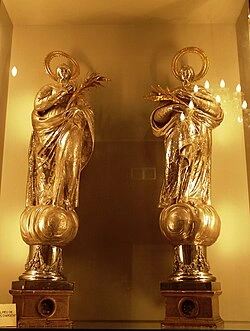
The Dolors Complex
The Conjunt dels Dolors (Dolors Complex) attached to Santa Maria stands as one of the finest preserved examples of Catalan Baroque architecture. Its origins trace back to 1694, when permission was granted for constructing a chapel for the Servite Order, with building commencing in 1698. The construction, spanning roughly a decade, was interrupted by the War of the Spanish Succession but was ultimately completed with elaborate decoration in frescoes, oil paintings, and sculptural elements between 1722 and 1737 by the artist Antoni Viladomat i Manalt. The main chapel within the complex houses a striking series of paintings depicting the Stations of the Cross and the Sorrows of the Virgin Mary. Viladomat’s dramatic use of characters and landscapes brought the biblical events to life with emotional intensity, engaging contemporary viewers.
Above, the intimate Meeting Room, located on the first floor, is decorated with oil paintings portraying the apostles and evangelists, centered around a ceiling painting of the Assumption of Mary surrounded by angels. The complex also includes a crypt used for burying congregation members and a choir loft featuring a large balcony topped with decorative latticework. Between July 2015 and July 2016, the mural paintings were carefully restored by the Center for the Restoration of Movable Property of Catalonia. The restoration involved cleaning accumulated grime, removing later overpainting, stabilizing the paint and plaster layers, and upgrading the lighting to meet modern standards. The project was jointly funded by the Generalitat de Catalunya’s Department of Culture, the City Council of Mataró, and the Archbishopric of Barcelona.
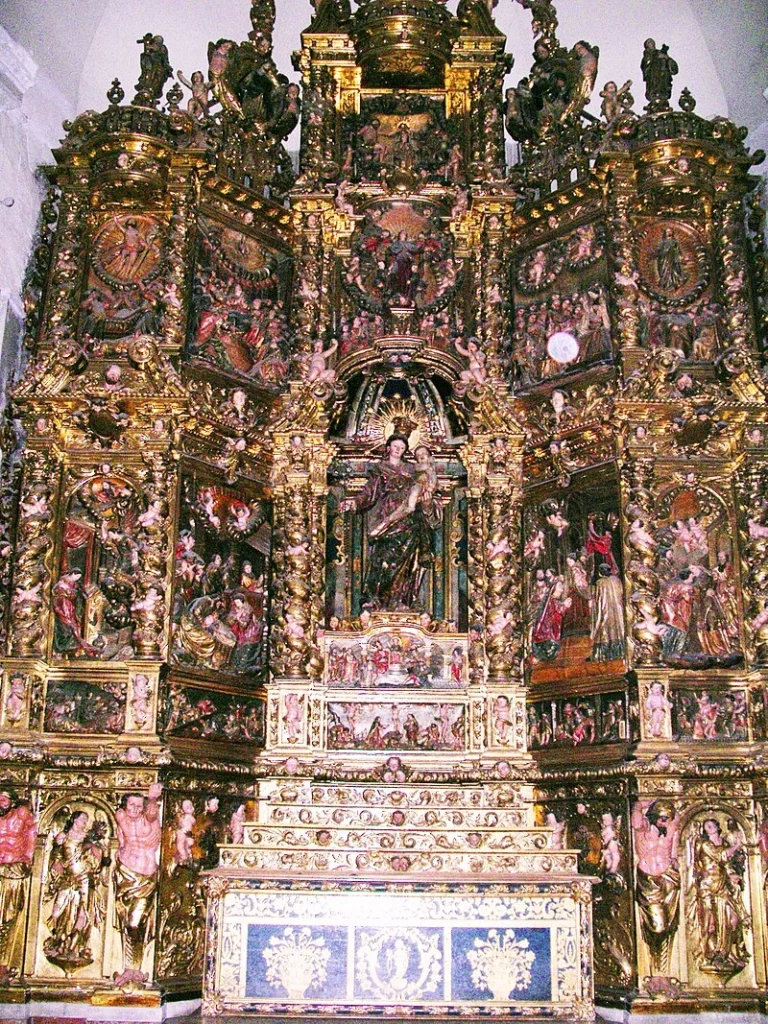
The Dome and Altarpiece of the Roser
The Baroque altarpiece of the Roser, constructed at the end of the 17th century, was designed by the Mataró-born architect and sculptor Antoni Riera i Móra, with assistance from his son Marià Riera and sculptor Lluís Bonifaç. The exterior of the Dolors Chapel features recently renovated sgraffito artwork, visible from the Fossar Xic. Following the destruction of the main altar altarpiece during the Spanish Civil War, the parish commissioned architect Ros i Bofarull to create new sculptures of the patron saints and to redesign the presbytery. This renovation resulted in the construction of a dome supported by four arches resting on simple columns in the Eastern Roman style, with a smaller dome crowning the top. At each corner where the arches meet, realistic statues of Saints Semproniana and Juliana were placed, intended originally for a future altarpiece but notable for their lifelike, subdued expression.

Meeting Room of the Congregation of the Dolors
Located above the sacristy of the Dolors Chapel and accessible via a narrow staircase, the Meeting Room of the Congregation of the Dolors is an intimate space measuring approximately 5 by 10 meters, with a maximum height of 2 meters. The room connects on one side to a small chamber housing an altar, and on the other to a smaller room containing one of the chapel’s decorative lattices. The room features a continuous bench along the walls and is adorned with an intricate pictorial ensemble that conforms to its octagonal ceiling. The paintings are arranged in gilded frames and include trapezoidal panels encircling a central octagonal depiction of the Assumption of the Virgin. Surrounding panels feature angels and the evangelists Saint John and Saint Luke. The artwork is characterized by a rich palette of bright colors, particularly reds, and an ornate treatment of gilded frames that emphasize the richness and craftsmanship of the decoration.
Feast Day
Feast Day : 27 July
The feast date linked to the Basilica of St. Mary in Mataró, Spain, is July 27th, celebrated during the local festival Les Santes, honoring the city’s patron saints Juliana and Semproniana. The main Mass and festivities happen on this day.
Church Mass Timing
Monday to Saturday : 8:00 pm
Sunday : 10:00 am, 12:30 pm
Church Opening Time:
Monday to Saturday : 9:00 am – 1:00 pm, 6:00 pm – 8:00 pm
Sunday : 9:30 am – 1:30 pm
Contact Info
Address : Basilica of St. Mary, Mataró, Spain
Carrer Sant Francesc d’Assís, 25, 08301 Mataró, Barcelona, Spain.
Phone : +34 937 90 15 28
Accommodations
Connectivities
Airway
Basilica of St. Mary, Mataró, Spain, to Sabadell Airport (QSA) Carr. de Bellaterra, distance 36 min (40.8 km) via C-32.
Railway
Basilica of St. Mary, Mataró, Spain, to Av. del Maresme, distance between 14 min (3.3 km) via Camí de la Geganta.

